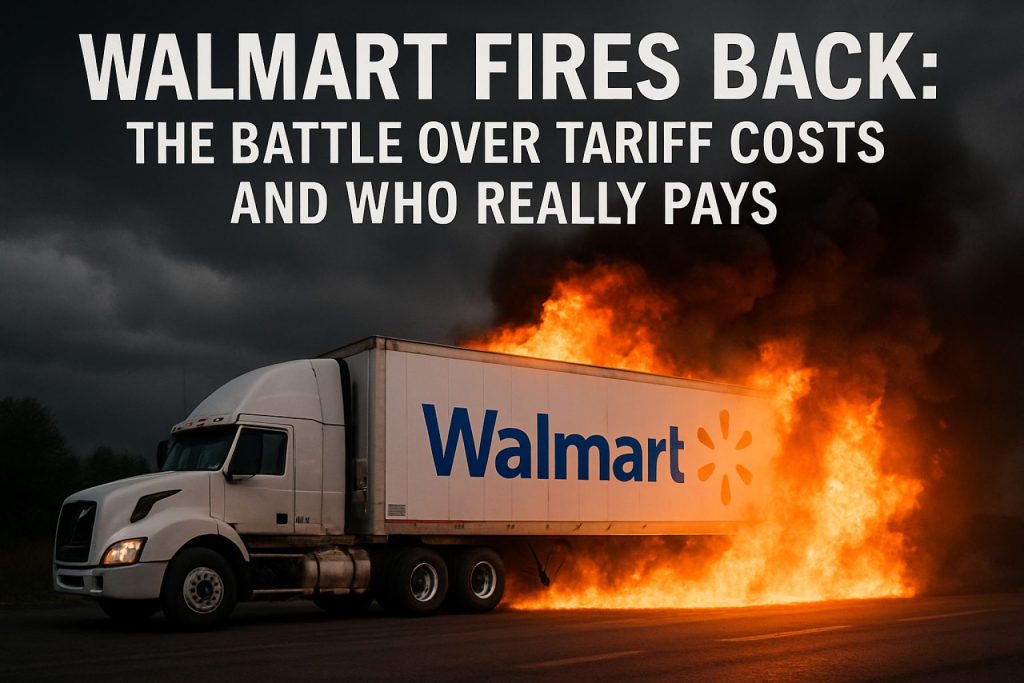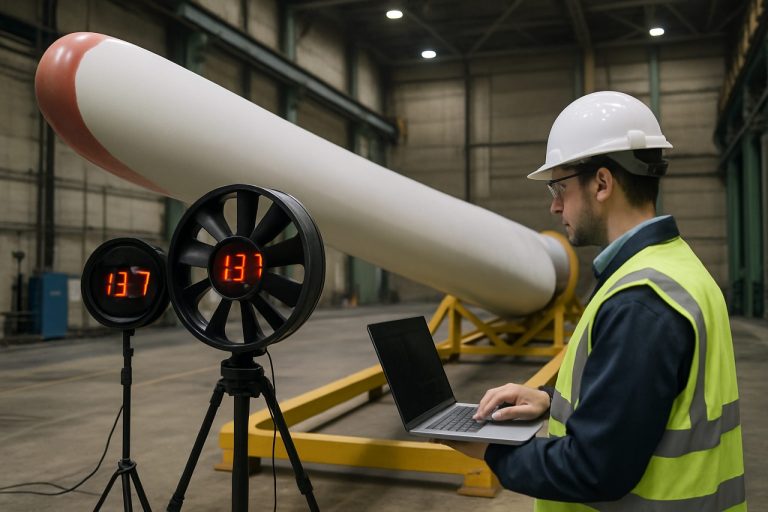
- Walmart’s ultra-thin retail margins leave little room to absorb additional costs like tariffs.
- Tariff disputes between Walmart executives and former President Trump center on who should bear increased import costs—retailers or shoppers.
- Even minor cost increases at Walmart impact millions of U.S. families due to the company’s scale.
- Pricing decisions carry significant impact, influencing global supply chains, inflation, and political dynamics.
- Uncertainty remains over Walmart’s ability to sustain low prices amidst ongoing economic and political pressures.
Shoppers pushing overflowing carts glide beneath the fluorescent glow of a Walmart supercenter, scanning aisles of everyday essentials. Yet, a storm brews far above the shelves—a high-stakes showdown between the world’s largest retailer and the former President of the United States.
On the surface, low prices have defined the Walmart experience for generations. But recent political thunderclaps sent tremors through the chain’s famously thin margins. In an escalating exchange punctuated by bold statements and bruising economics, Walmart executives and President Donald J. Trump have sparred over who, exactly, should bear the cost of tariffs—the retail giant or its millions of shoppers.
It began with quiet, uneasy warnings. Doug McMillon, CEO of Walmart, didn’t mince words: “We will do our best to keep our prices as low as possible but given the magnitude of the tariffs, even at the reduced levels announced this week, we aren’t able to absorb all the pressure given the reality of narrow retail margins.” The subtext: even a goliath like Walmart is vulnerable when the economic tides shift.
The president responded with characteristic force. On Truth Social, Donald Trump declared, “Walmart made BILLIONS OF DOLLARS last year, far more than expected. Between Walmart and China they should, as is said, ‘EAT THE TARIFFS,’ and not charge valued customers ANYTHING.” The implication was clear—such a behemoth could surely shoulder the pain without passing a penny on to consumers.
Within the Walmart family, the response was measured but unflinching. Spokesperson Joe Pennington offered a glimpse behind the checkout counter: “We have always worked to keep our prices as low as possible and we won’t stop. We’ll keep prices as low as we can for as long as we can given the reality of small retail margins.”
- Retail margins at Walmart are famously slim—just a few cents on the dollar for many products.
- Tariffs imposed on imported goods can significantly raise purchasing costs on the very items shoppers buy every day.
- The sheer scale of Walmart’s operation means even small percentage increases reverberate across thousands of stores and millions of customers.
Experts have watched these public negotiations with keen eyes. The balancing act between corporate profit, customer loyalty, and geopolitical headwinds tests the mettle of even market leaders. Pricing decisions at Walmart don’t just ripple through American households—they have consequences for global supply chains, inflation trends, and Washington’s political calculus.
For now, families glance at receipts and wonder how long the low-price promise can last under the shadow of international tariffs and political scrutiny. One thing is certain: the next move in the battle between America’s former Commander-in-Chief and its largest private employer will shape what millions pay at the register—and might even determine who shoulders the true cost of global economic brinksmanship.
Walmart vs. Trump: The Hidden Costs and Controversies That Could Change Your Shopping Forever
-
Pros:
Walmart consistently delivers low prices, helping millions of families save money on everyday goods—even amid economic headwinds.
The company’s massive scale allows for significant purchasing power, translating to a wide selection and competitive pricing for consumers.
-
Cons & Limitations:
Ultra-thin margins: Walmart‘s profit margins are razor-thin, limiting its ability to absorb costs associated with tariffs. Price hikes can quickly trickle down to shoppers.
Vulnerability to economic policy: Store-level prices and selection are strongly impacted by political decisions, such as tariffs, which can result in abrupt shifts in costs for consumers.
-
Controversies:
Tariff Tensions: The highly public dispute between Walmart and former President Donald J. Trump—who claimed the company should “eat the tariffs”—spotlights broader debates about who truly pays the price in global trade wars.
Corporate vs. Political Interests: Powerful entities clashing over economic strategy may result in unpredictable outcomes for consumers, with prices and supply chain stability hanging in the balance.
You Won’t Believe What’s Next for Walmart: Future Trends and Shocking Predictions!
- Dynamic Pricing Algorithms Will Intensify: Expect Walmart to continue refining real-time pricing powered by advanced AI to keep prices competitive even as tariffs and supply chain pressures fluctuate.
- Increased Supply Chain Resilience: To combat tariff volatility, Walmart will likely accelerate strategies to diversify suppliers and source more products domestically, reducing dependence on international imports.
- Political and Economic Tug-of-War: The standoff between Walmart and high-profile political figures such as Donald J. Trump is set to intensify, impacting pricing strategies and public corporate communications.
- Margin Pressures Persist: The razor-thin margins of the retail sector, especially at Walmart’s scale, will force tough decisions: absorb costs or carefully pass them on to customers. Expect transparency from executives like Doug McMillon to continue as a trust-building strategy.
- Consumer Inflation Concerns: As Walmart navigates tariffs and global economic shifts, American shoppers could see gradual price adjustments at the checkout, influenced by broader inflationary trends.
- Tech-Driven Shopper Experience: Walmart will leverage technology—think cashierless stores and personalized mobile shopping—to optimize costs and enhance loyalty in a challenging market.
- Potential for New Retail-Political Flashpoints: As political climates shift leading up to major U.S. elections, expect further public debates over who should bear the cost of economic decisions, with Walmart’s unique influence making it a central player in these discussions.
The next years promise even higher stakes as Walmart adapts to economic shocks, technological leaps, and heated political battles. Watch closely: what happens in Walmart’s aisles could define not just the future of retail—but the future of how Americans shop and save.



